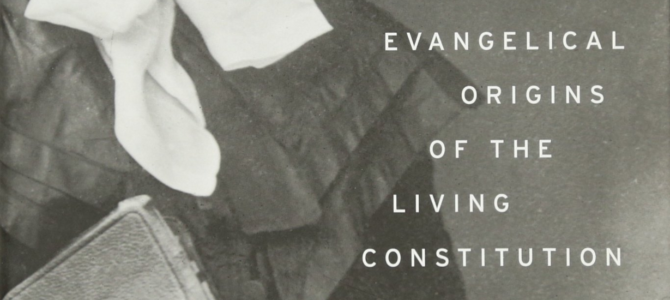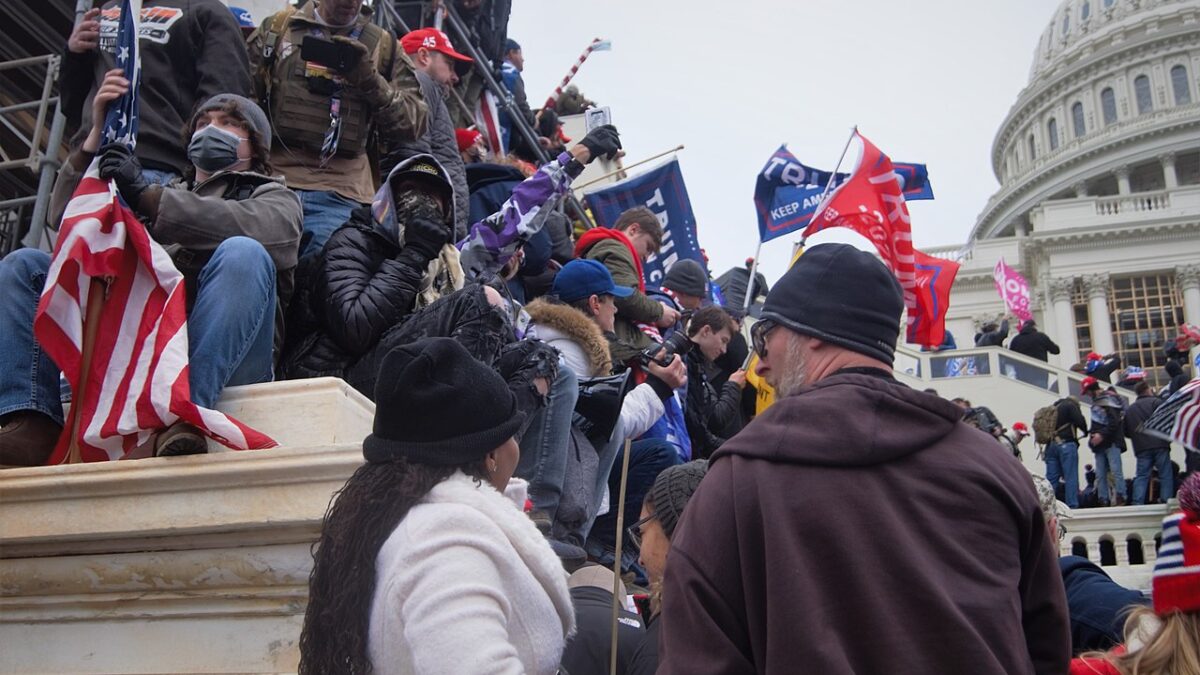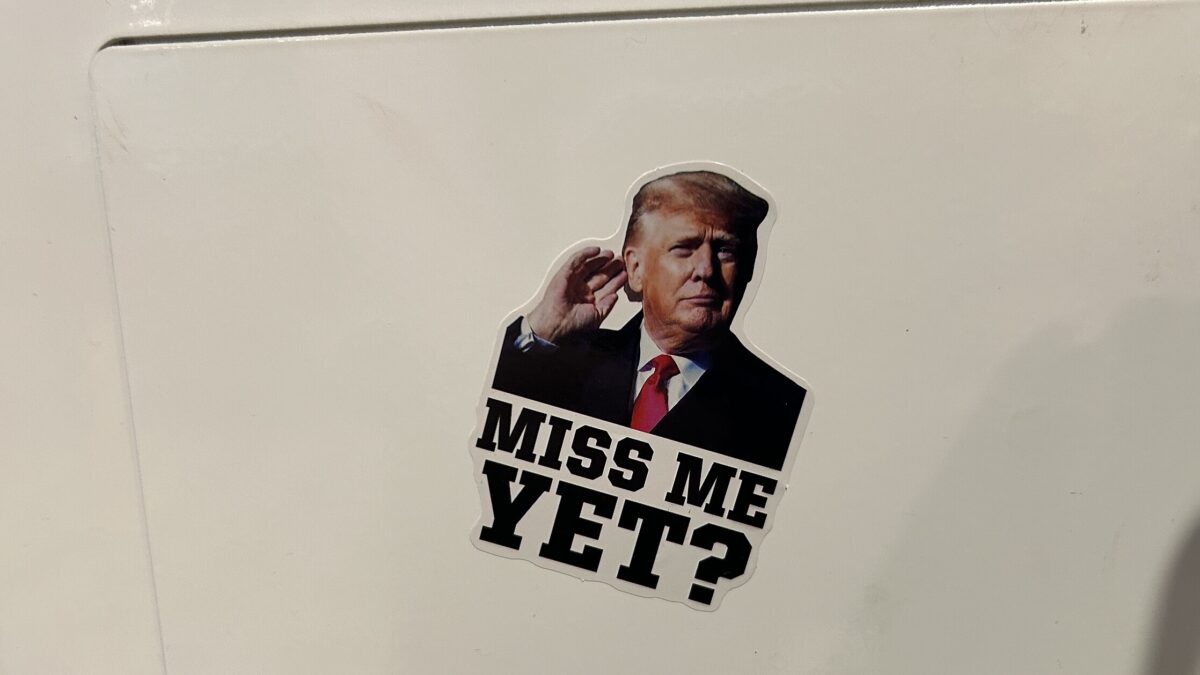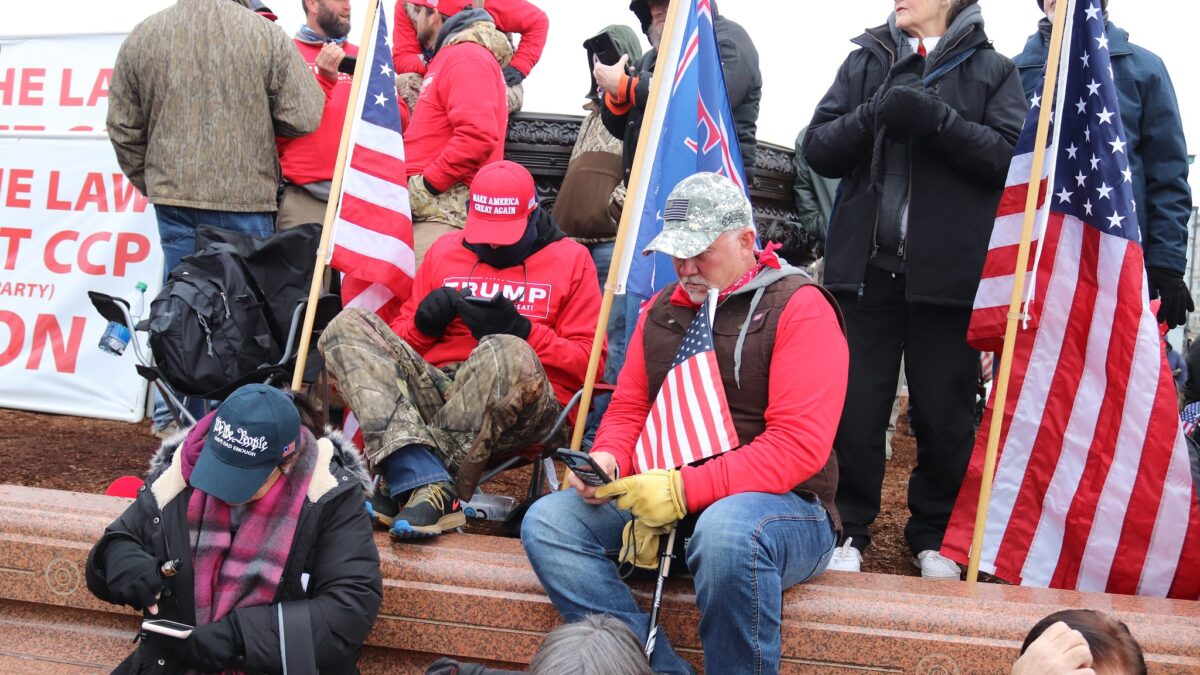
Constitutional originalism has long been an unquestioned dogma for conservative evangelicals, as the recent nomination of Neil Gorsuch to the Supreme Court has again confirmed. Evangelical political leaders responded to the announcement with unrestrained praise. As the Southern Baptist Convention’s Russell Moore wrote, “Judge Neil Gorsuch…is a brilliant and articulate defender of Constitutional originalism in the mold of the man he will replace: Justice Antonin Scalia.”
Focus on the Family’s James Dobson struck a similar note, suggesting that Gorsuch would “uphold and defend the Constitution of the United States and the original intent of its framers.” For many evangelical conservatives, originalism has a dogma-like status not just because it is the proper way to read and interpret a text, but because the competing doctrine of the “living Constitution” has brought us not only the administrative state in the New Deal, but Roe and Obergefell.
Yet if John Compton’s fascinating new book The Evangelical Origins of the Living Constitution is right, evangelicals at the turn of the twentieth century are largely to blame for evangelicals’ problems here at the turn of the twenty-first century: It was evangelicals then who made the doctrine of the “living Constitution” plausible, even if evangelicals today lament it.
Compton’s fascinating and masterfully executed argument goes something like this: Evangelical campaigns against alcohol and lotteries in the late nineteenth and early twentieth century aimed at not merely regulating such vices, but prohibiting them. But to enact their political vision, they had to break existing traditions of constitutional interpretation. By exerting political pressure upon courts and subordinating constitutional interpretation to their political aims, evangelicals helped create the legal and intellectual conditions in which the doctrine of the “living Constitution” arose.
Regulating Public Morality
Compton’s argument for this thesis is intricate, but it demands and deserves unwinding. He posits that the political and moral perfectionism of antebellum Protestants created standards of public morality that “threatened the core ideals of the commercial republic” that the Constitution was drafted to engender and protect. That is, evangelicals wanted to regulate public morality in ways that impinged upon commercial and business practices that had been legal, if not always favorably smiled upon, since the country’s founding.
While evangelical campaigns against liquor and lotteries eventually aimed at eradication, rather than tolerant regulation, such a goal was at odds with existing doctrines of constitutional interpretation. The attempt to abolish existing lottery grants, for instance, ran aground upon the Contract Clause, while prohibitions on alcohol possession and sales infringed commonly accepted notions of property rights. Not only that, but prohibition at the local level could not be accomplished without overcoming the Commerce Clause. Interstate sales were protected by the federal government, while police powers were reserved to local governments—a dilemma that left “immoral” property free to be distributed and sold across state lines.
Compton traces these conflicts through their development in state courts, and then within the Supreme Court, to show that evangelical morality eventually influenced constitutional interpretation. To pick but one small aspect of Compton’s many data points, he contends that until the mid-1870s, agreements between “legislatures and private entities were contracts within the meaning of the Contract Clause,” which would have included lottery grants. However, in the 1880 case Stone v. Mississippi, Chief Justice Morrison Waite invalidated such a contract—a lottery grant from Mississippi—on grounds that the government, as Compton says, “possessed the inherent right to suppress immoral activities.”
It is, of course, theoretically possible that such a doctrinal shift had pristine intellectual and interpretative causes. However, Compton points out that the decision was made in the midst of a significant public controversy about the Louisiana Lottery, which was at the time probably the most notorious of the lottery companies.
As prohibitions on gambling at the local level had increased, the Louisiana Lottery had survived and expanded through interstate ales. They were so well known that in 1879, Anthony Comstock—of the anti-contraception laws fame—arrested dozens of Louisiana Lottery agents in New York City. The Louisiana legislature subsequently revoked the lottery’s 25-year charter—but it was protected in court by a judge who was, Compton says, “widely denounced as a shill for lottery interests.”
Doctrinal Incoherence
This was the political context in which the Stone case was decided, and which set the stakes for the Supreme Court’s ruling. Protecting the lottery grant on the basis of the Commerce Clause would mean the “most notoriously corrupt corporation in America” would enjoy immunity for the length of its charter. However, revoking the grant would undermine the traditional interpretation of the Commerce Clause, which had protected lottery grants.
Waite’s opinion in Stone suggests he is not unaware of such political realities. Waite had written that because lotteries were prohibited in many states, the “will of the people has been authoritatively expressed” on the question. The court could either embrace precedent and oppose the will of the people—or innovate. They chose the latter course, and created an “exception” that they tried to quarantine from having broader doctrinal effects.
Yet Stone did not crush the Louisiana Lottery, which survived by exerting its considerable political power to make their charter part of their state’s constitution, and thus outside the scope of Stone’s ambit. (Yes, seriously.) The survival of the Louisiana Lottery allowed it to go on flourishing through interstate sales. Much to the frustration of evangelical anti-lottery activists, as long as a single state allowed the lottery to exist, both the states and the federal government lacked the power to curtail interstate sales.
States had no power over interstate commerce, and the federal government was hampered by the distinction between its police and commerce powers. Compton argues that congressional legislation prohibiting transporting lottery tickets was the “first clear exercise of federal police power.” The Supreme Court upheld the law in Champion v. Ames, in which Justice Harlan argued that lottery tickets were commercial items, even though they had never been regarded as such by the law. But Harlan also emphasized “the fact that lotteries had ‘become offensive to the entire people of the Nation.’” The conflict, in other words, between morality and commerce was decided on morality’s side—and thus another “exception” was born.
While judges in such opinions attempted to quarantine the effect of their “exceptions” to their cases, Compton demonstrates that the logic that they relied upon was inexorable. In each area of conflict between the aims of morals legislation and the Supreme Court’s doctrines, Compton traces a three-stage pattern of “judicial resistance…accommodation, and—ultimately—doctrinal incoherence.”
Making the ‘Living Constitution’ Credible
The Supreme Court’s response to New Deal legislation has often been credited (or blamed) for undermining economic due process in the service of a hugely popular administrative state, a shift that some have blamed on the idea of the “living Constitution.” Yet as Compton observes, nearly “every argument advanced during the New Deal period began by quoting from Justice Harlan’s opinion in Champion v. Ames.” That is, it was the morals decisions of the late nineteenth century that made the New Deal cases possible.
Oliver Wendell Holmes, who is widely credited with being one of the progenitors of the doctrine of the “living Constitution,” repeatedly pointed to alcohol and gambling opinions to argue that as long as the regulation was reasonable, the judiciary should “defer to the considered judgment of the people.” Compton suggests that “morals precedents thus brought the abstract arguments of the sociological jurists and the Legal Realists down to earth.” That is, they made the notion of a “living Constitution” credible.
It is tempting to think that the political perfectionism of the late-nineteenth century evangelicals has nothing to do with the political manifestation of evangelicalism today. The campaigns against lotteries and alcohol were, after all, progressive efforts, while the struggles for marriage and religious liberty that have occupied the Religious Right’s attention are largely conservative, defensive postures. And even if Compton’s thesis is true, it is always open to contemporary evangelicals to disavow their own history, and simply deny that what happened in the past has any meaningful bearing on either the Religious Right’s self-understanding or its political rhetoric.
Yet besides being a deeply unconservative posture, such a path would obscure the lessons Compton’s book contains for political movements tempted by perfectionist ideals—as the Religious Right indisputably is. For one, the political perfectionism at the heart of the anti-lottery and anti-gambling campaigns raises deep and important questions about which vices we should merely regulate and which we should prohibit, and to what lengths we will go to restrain them.
The Sins of Evangelicalism’s Forefathers
Few of us, on the Right and Left, are willing to countenance the question of which injustices we should permit as a society for the sake of not creating deeper injustices in our efforts to solve them. But in aiming to eradicate one vice, evangelical activists sowed the seeds for accomodating many others.
Not only that, but Compton’s thesis should prompt contemporary evangelicals to mitigate the denunciations that they direct toward the progressive left for their advancement of the “living Constitution” doctrine. The idea that the meaning of the Constitution should be determined by the will of the living has generated a great deal of damaging legal nonsense. From Sen. Dianne Feinstein’s comments about Roe to Judge Posner’s recent invention of the judicial right to legislate, the “living constitution” has wrought a great deal of bad upon our country.
Yet if Compton’s thesis is right, it means that such strong denunciations need to be accompanied by a greater deal of self-awareness than they often are, and to be decoupled from the antithesis between “us” and “them” that happens when the argument becomes defined by partisan stigma, as this one indisputably has. The doctrine of the “living Constitution” is bad, but it’s a badness which more traditions have deployed than we would want to recognize.
Compton’s thesis demonstrates that within the many ironies of history, the social and political instruments a perfectionist movement deploys may be easily co-opted for ends and purposes never imagined in their development. That is, if late-twentieth-century evangelical activists sowed the wind, today’s activists have reaped the whirlwind. Or, to switch the biblical reference, the constitutional sins of evangelicalism’s forefathers have long been visited upon their more conservative heirs.
Acknowledging Complicity
The value of such an account is that it requires a more complicated assessment about who is to blame for various features of our culture war. Describing the progressive Left as the “aggressors” in the culture war has the dual effect of preserving the Religious Right’s purity and establishing its victim status. Yet Compton makes it clear that on at least one of our deepest culture war fronts—theories of constitutional interpretation—matters are far more complicated than that simplistic narrative allows. The idea that the progressive Left invented the doctrine of the living Constitution ex nihilo in the 1920s plays well, but only at the expense of letting our own history and tradition off the hook.
But then, that kind of self-exonerating narrative is precisely what a culture war requires, if it is going to be fought with the energy that it (allegedly) needs. Acknowledging the complicity of one’s own tradition in bringing about the social and political conditions one is decrying must inevitably chasten a movement’s rhetoric—but such reflective self-awareness rarely generates the kind of enthusiasm and fervor that keeps the institutional coffers full.
It is easier—far easier—to simply disavow the past and pretend that evangelical politics began in 1980 with the Advent of St. Ronald of Reagan. There is nothing particularly conservative about such a strategy, inasmuch as it seeks to ignore both the debts and benefits that a movement’s forbearers bestowed. But there lies the ironical rub; in seeking to escape the past and define the evangelical political witness only by the living, today’s Religious Right adopts the very mentality that demonstrates their continuity with their late-nineteenth-century forbearers.









